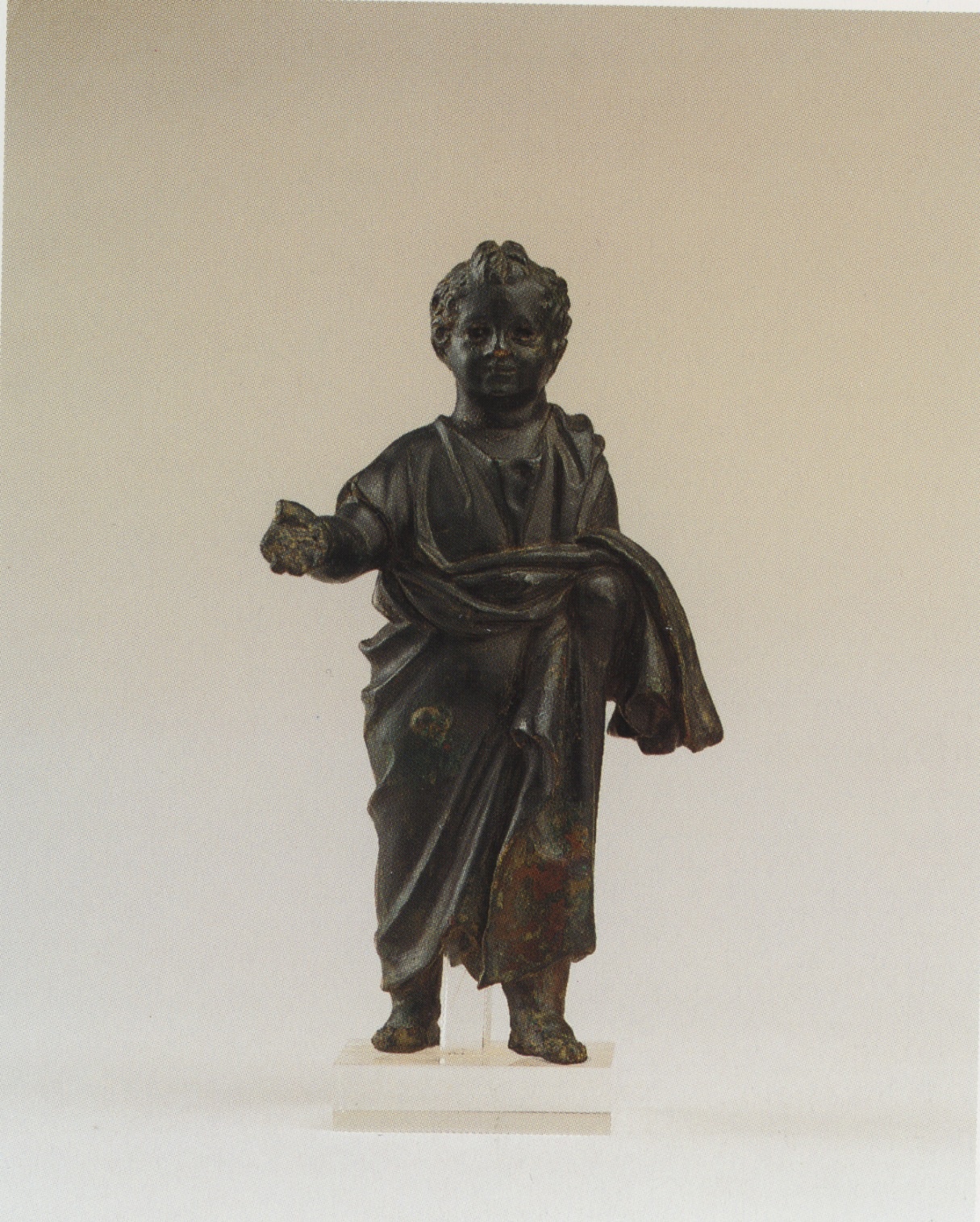
Bronze
H: 7.15 cm
Allegedly from Asia Minor
Julio-Claudian
Mid 1st century A.D.
The body hollow-cast by the lost wax method; the head, left arm and both feet with lower legs solid-cast, these last made separately as were also possibly the right arm and head. The different parts would have been joined by fusion-welding. The whole carefully cold-worked, burnished and polished. The eyes possibly once inlaid, a pin still in place in the right eye.
Condition: patina a blackish olive green with reddish brown traces, yellowish metal with red cuprite shows through on the abraded tip of the nose. All the fingers of the right hand missing, his right big toe stubbed.
This confident smiling child, though he is not wearing the toga praetexta, is in line with a tradition [1] of the early Imperial period that produced many statues of youths, thus draped, usually Julio-Claudian princes. Those free-born were allowed to wear this, the dress of officials, until they were of an age to wear the toga virilis. The toga praetexta was usually shown in conjunction with the bulla, the insignum ingenuitatis.
This child seems to be dressed in an imperial toga and his stance is that of a prince or ruler.
Exhibited and Published:
Art Antique, cat. no. 369, ill.
Archaeology Glossary
1 Gabelmann, H.: Römische Kinder in der Toga Praetexta, JdI 100, 1985, p. 497 ff.